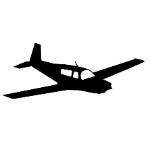How strong is the M20 wing?
-
Members Online
- Marc_B
- AndreiC
- pgray
- Conrad
- Kelpro999
- Marc B
- exM20K
- ElkoRandy20J
- good2eat
- skykrawler
- Tmack201
- TCC
- prillayo03
- FlyingScot
- Scott Ashton
- Rick Junkin
- Mark89114
- redbaron1982
- MooneyMax
- NotarPilot
- Ron McBride
- Slick Nick
- turbofan
- jcolgan
- ziggysanchez
- kaba
- Nico1
- Rmfriday
- flyboy0681
- Hank
- Stanton R
- Fly Boomer
- MDMooney
- Ragsf15e
- Guillaume
- McMooney
- Vance Harral
- cbarry
- Taz
- A64Pilot
- Wingfree
- KLRDMD
- Mike Will Fly It
- CAV Ice
- PeterRus
- jsclafani
- BlueDun


Recommended Posts
Join the conversation
You can post now and register later. If you have an account, sign in now to post with your account.